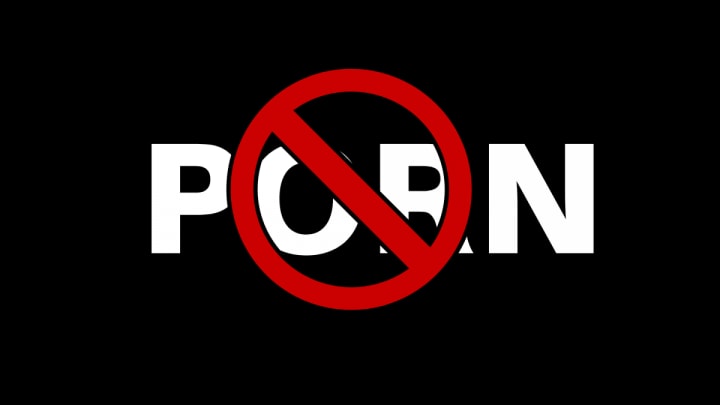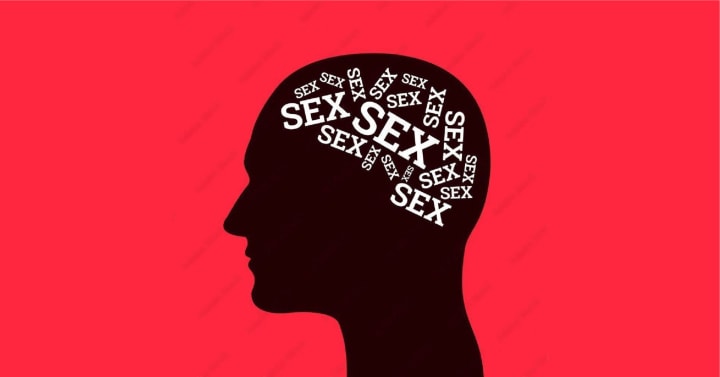The Definition and Impact of Pornography: Exploring the Complexities of a Controversial Topic
From Cultural Differences to Brain Chemistry: Understanding the Various Facets of Pornography and Its Effects on Individuals and Society"

what is porn
Pornography (often abbreviated as "porn") refers to any sexually explicit material that is created with the intention of arousing sexual desire or providing sexual gratification to its viewers. This can include photographs, videos, audio recordings, stories, and other forms of media that depict sexual acts or nudity. Pornography is typically created for commercial purposes and may be distributed through various channels, including the internet, magazines, DVDs, and other forms of media.
I understand that pornography is a sensitive and controversial topic that can spark debates and discussions. In this article, I will attempt to provide an objective overview of pornography, its history, its effects on individuals and society, and the current state of the industry.
First, it is important to define what is meant by "pornography." The term generally refers to any material, such as videos, images, or text, that is intended to sexually arouse or stimulate the viewer or reader. Pornography can feature a wide range of sexual acts, including but not limited to heterosexual or homosexual intercourse, masturbation, and BDSM. It is widely available online, on DVDs, and in magazines and other print media.
The history of pornography is long and varied. Erotic art and literature have existed since ancient times, and explicit depictions of sex have been found in cultures around the world. However, it was not until the invention of photography and film in the 19th and 20th centuries that pornography began to be produced on a large scale. The availability of pornography increased dramatically with the rise of the internet in the late 20th century, making it easier than ever before to access and distribute sexually explicit material.
The effects of pornography on individuals and society are a subject of much debate. Some argue that pornography can be a harmless and even beneficial form of sexual expression, allowing individuals to explore their desires and fantasies in a safe and consensual manner. Others argue that pornography can be addictive and damaging, leading to unrealistic expectations of sex and harmful attitudes towards women and other marginalized groups.
Research on the effects of pornography is mixed, with some studies suggesting that exposure to pornography is associated with negative outcomes such as sexual dysfunction, relationship problems, and an increased risk of sexual aggression. However, other studies have found no evidence of a causal link between pornography and these negative outcomes, and some research has even suggested that pornography use may have positive effects on sexual satisfaction and intimacy in certain contexts.
The pornography industry itself is a complex and controversial topic. While some argue that pornography is a legitimate form of expression and a source of income for performers and producers, others criticize the industry for its exploitation of performers, the objectification and degradation of women and other marginalized groups, and its links to other forms of exploitation such as human trafficking.
Efforts to regulate pornography have been met with mixed success. Some countries have strict laws governing the production and distribution of pornography, while others have more relaxed policies. The rise of the internet has made it increasingly difficult to regulate pornography, as it can be produced and distributed from anywhere in the world and accessed by anyone with an internet connection.
In recent years, there have been increasing calls for ethical and feminist porn, which aims to create a more equitable and respectful portrayal of sexuality. Ethical porn seeks to prioritize the well-being and consent of performers, while feminist porn aims to challenge traditional gender roles and stereotypes and promote a more diverse and inclusive representation of sexuality.
To better understand the issues surrounding pornography, it can be helpful to examine some of the different perspectives and arguments that are commonly made. Here are a few examples:
Freedom of speech and expression: Many people argue that pornography is a form of protected speech and expression, and that attempts to restrict or regulate it are a violation of individual rights. They argue that adults should be free to consume and create any kind of pornography they choose, as long as it is produced and distributed in a legal and consensual manner.
Harm to individuals: Others argue that pornography can have harmful effects on individuals, particularly women and other marginalized groups. They argue that pornography often reinforces harmful stereotypes, objectifies women, and can contribute to a culture of violence and exploitation. They may call for increased regulation or even an outright ban on pornography.
Empowerment and agency: Some proponents of pornography argue that it can be a form of sexual empowerment and agency, allowing performers to take control of their own bodies and explore their sexuality on their own terms. They may argue that ethical and feminist porn can be a positive force for change in the industry, promoting diversity, consent, and respect for performers.
Addiction and compulsivity: Another concern raised by some critics of pornography is the potential for addiction and compulsive behavior. They argue that pornography can be highly addictive, leading to problems such as decreased sexual functioning, relationship problems, and a decreased ability to enjoy non-pornographic sexual experiences.
Cultural and societal impact: Finally, some argue that pornography has broader societal and cultural implications, influencing attitudes towards sexuality, gender roles, and relationships. They may argue that pornography contributes to a culture of sexual objectification and exploitation, or that it can create unrealistic expectations and stereotypes about sexual behavior.
It's worth noting that each of these perspectives has some basis in research and evidence, but there is still much debate and controversy surrounding the issue of pornography. Ultimately, the impact of pornography on individuals and society is likely to be complex and multifaceted, and will depend on a variety of factors, including the individual's relationship to pornography, the content and context of the pornography, and broader cultural and social norms.

Is It Normal To Watch Porn?
The question of whether or not watching pornography is "normal" is a complex one, as what is considered normal can vary greatly depending on cultural and individual factors. However, it is safe to say that pornography is a widespread and widely accepted form of entertainment in many parts of the world.
It is important to remember that people have different sexual preferences and desires, and what one person considers normal may not be the same for someone else. Additionally, what is considered acceptable or normal can change over time and across cultures.
That being said, it is important to note that excessive or compulsive use of pornography can have negative consequences on mental health, relationships, and daily functioning, and can potentially develop into an addiction. It is important for individuals to be aware of their own patterns of pornography use and to seek help if they feel that it is interfering with their daily life or causing distress.
Additionally, it is important for individuals to consume pornography in a safe and responsible manner, ensuring that they are not supporting unethical or harmful practices, such as the exploitation of performers or the production of non-consensual content. It is also important for individuals to have open and honest communication with their partners about their sexual desires and preferences, and to engage in consensual sexual behavior.
Overall, while watching pornography is a common and accepted behavior for many individuals, it is important to be mindful of its potential impact on one's mental health and well-being, and to consume it in a safe and responsible manner.

Why is Pornography the Biggest Thing on the Internet?
Pornography is one of the most popular forms of content on the internet, and there are several factors that contribute to its popularity. Here are a few potential reasons why pornography is so prevalent online:
Accessibility: With the widespread availability of the internet and the proliferation of smartphones, accessing pornography has become easier than ever before. Individuals can access a vast array of pornography at any time and in any location, often without the need for payment or registration.
Anonymity: The internet provides a level of anonymity that can be appealing to individuals who are exploring their sexuality or who are interested in pornography but may feel ashamed or embarrassed to seek it out in person. This anonymity can make it easier for individuals to engage with pornography without fear of judgment or social stigma.
Variety: The internet provides access to an incredibly diverse range of pornography, from mainstream genres to more niche and fetishistic content. This variety allows individuals to explore their sexuality and preferences in a way that may not be possible through traditional media or in-person encounters.
Social Taboos: In many cultures, sex and sexuality are still considered taboo subjects, leading some individuals to seek out pornography as a way to explore their desires in a private and anonymous way. Additionally, the stigma surrounding sex work and the adult industry may lead individuals to seek out pornography online rather than seeking out sex workers in person.
Profitability: The pornography industry is a highly profitable one, with some estimates suggesting that it generates billions of dollars in revenue each year. As such, there is a significant financial incentive for producers and distributors to create and promote pornography online.
People use these words to watch porn on internet(porn,xxxxx ,brazzers,xnxx,xxnx,xvideos,indian porn ,xxx sexy video,xxx hindi,sexy story,xxx desi,xxx video hindi,xxx sexy,xnxx com,sex xnxx ,xnxx. com,indian xnxx,www xnxx com,xnxx tv,sexy porn,xnnx,xxx video hindi ,xxx video,hindi xxx video,indian sex,hindi bf,desi porn,xnxx hd,sex xxx,xxx hd) sorry but you should know about these words so that you save a child or youth from this trap

While pornography may be one of the biggest things on the internet, it is important to remember that not all pornography is created equal. Some content may perpetuate harmful stereotypes or engage in unethical practices, such as the exploitation of performers or the production of non-consensual content. It is important for individuals to consume pornography in a safe and responsible manner, and to be aware of the potential negative consequences that excessive or compulsive use of pornography can have on mental health, relationships, and daily functioning.

Why India is getting addicted to Porn? Porn Addiction & Indian Youth
Pornography addiction is a complex issue that cannot be attributed to a single cause. However, there are a number of factors that may contribute to the increasing prevalence of pornography addiction among Indian youth. Here are a few potential reasons:
Accessibility: With the proliferation of smartphones and cheap data plans, accessing pornography has become easier than ever before. Many young people in India have unlimited access to the internet and can easily find and consume pornographic content in the privacy of their own homes.
Social Taboos: India is still a largely conservative society, with traditional values and social taboos surrounding sex and sexuality. This can create a culture of shame and secrecy around sexual behavior, leading some young people to turn to pornography as a way to explore their sexuality in a private and anonymous way.
Lack of Sex Education: The lack of comprehensive sex education in India means that many young people may not have access to accurate information about sex and sexuality. This can lead to curiosity and experimentation, which may lead to a greater likelihood of seeking out pornography.
Peer Pressure: Many young people in India report feeling pressure to conform to social norms and expectations around sex and relationships. This pressure can lead some to seek out pornography as a way to fit in or appear more sexually experienced.
Mental Health Issues: Some individuals may turn to pornography as a coping mechanism for underlying mental health issues, such as depression, anxiety, or trauma. The easy accessibility of pornography can make it a convenient escape from these difficult emotions.
While pornography addiction can have negative consequences on mental health, relationships, and daily functioning, it is important to remember that not all people who use pornography will develop an addiction or experience negative consequences. It is important for individuals struggling with pornography use to seek support and guidance from mental health professionals, as well as to cultivate healthy habits and relationships to promote overall well-being. Additionally, promoting comprehensive sex education and breaking down social taboos around sex and sexuality can help reduce the stigma surrounding pornography and encourage healthier attitudes towards sex.

Why is Pornography Banned in India
Pornography is not completely banned in India, but the country does have strict laws regarding the production, distribution, and consumption of pornographic content. Here are a few reasons why pornography is heavily regulated in India:
Social and Cultural Factors: India has a conservative and traditional culture that places a high value on modesty and sexual discretion. As such, pornography is often viewed as a threat to traditional Indian values and morality, and there is a strong social stigma attached to those who engage with pornography.
Legal Framework: The Indian Penal Code (IPC) and the Information Technology Act, 2000 provide for the criminalization of the production, distribution, and consumption of pornography. The laws are aimed at preventing the exploitation of women and children, and prohibit the production or distribution of pornographic content that is deemed obscene or offensive.
Public Health Concerns: There are concerns among some Indian officials and activists that pornography may have negative effects on public health, particularly with regard to addiction, sexually transmitted infections (STIs), and the objectification and exploitation of women.
National Security: There are concerns that the consumption of pornography may have national security implications, particularly with regard to cybercrime and online radicalization.
It is worth noting that while pornography is heavily regulated in India, there is still a significant demand for it, particularly among younger generations who have grown up with greater exposure to Western media and values. Despite the legal and social barriers to accessing pornography, many individuals in India still find ways to consume it through virtual private networks (VPNs) and other online tools.

The Science of Pornography Addiction
The concept of pornography addiction is controversial and remains a topic of debate among experts in the field of addiction and psychology. While some argue that it is a real and serious problem, others argue that it is not a true addiction and is instead a symptom of other underlying mental health issues.
Despite the controversy, there is some research that suggests that excessive use of pornography can have negative effects on the brain and behavior, similar to other types of addiction. Here are a few key findings:
The Reward System: The brain's reward system is activated by pleasurable experiences, such as sex or food. Research has found that viewing pornography can activate this same reward system, leading to increased dopamine release, which creates feelings of pleasure and reward. Over time, repeated exposure to pornography can desensitize the reward system, leading to the need for more extreme or novel stimuli to achieve the same level of pleasure.
Withdrawal Symptoms: People who use pornography excessively may experience withdrawal symptoms when they try to stop or reduce their use. These symptoms can include anxiety, depression, irritability, and difficulty concentrating.
Craving and Compulsion: Many people who struggle with pornography use report feeling a strong craving or compulsion to view pornographic content, even when they know it is harmful or interfering with other areas of their life. This sense of loss of control is similar to what is experienced in other types of addiction.
Negative Consequences: Excessive use of pornography can have negative consequences on mental health, relationships, and daily functioning. Research has found that people who report problematic use of pornography are more likely to experience symptoms of depression, anxiety, and low self-esteem, as well as relationship problems and difficulty with work or school.
Brain Changes: Some studies suggest that long-term use of pornography may lead to structural changes in the brain, including decreased gray matter in regions associated with impulse control and decision-making. These changes may contribute to the difficulty people experience in controlling their use of pornography.
While these findings suggest that excessive use of pornography can have negative effects on the brain and behavior, it is important to note that not all people who use pornography will develop an addiction or experience negative consequences. Additionally, there is still much that is not understood about the nature of pornography addiction and how best to treat it.
Some experts recommend a multidisciplinary approach to treating pornography addiction, including cognitive-behavioral therapy, mindfulness techniques, and medication when appropriate. It is also important for individuals struggling with pornography use to seek support and guidance from mental health professionals, as well as to cultivate healthy habits and relationships to promote overall well-being.

What Does Pornography Do to Your Brain?
Research suggests that pornography can have an impact on the brain in several ways. Here are a few potential effects that pornography can have on the brain:
Increased Dopamine Release: One of the main neurotransmitters associated with reward and pleasure is dopamine, and research has shown that viewing pornography can trigger the release of dopamine in the brain. This can create a sense of pleasure and reward that can reinforce the behavior of viewing pornography and lead to a desire for more frequent or intense stimulation.
Changes in Brain Structure: Studies have shown that excessive or compulsive use of pornography may lead to changes in brain structure, particularly in areas of the brain associated with reward and motivation, such as the prefrontal cortex and the amygdala. These changes may make it more difficult for individuals to control their impulses and to resist the urge to view pornography.
Desensitization: With frequent exposure to pornography, individuals may become desensitized to certain types of sexual content or stimulation, requiring more extreme or novel content to achieve the same level of arousal and pleasure. This can lead to a tolerance effect, where individuals require more and more stimulation to achieve the same level of satisfaction.
Negative Effects on Relationships: Research has also suggested that frequent pornography use may have negative effects on intimate relationships, potentially leading to lower relationship satisfaction, decreased sexual intimacy, and an increased likelihood of infidelity.

It is important to note that not all individuals who view pornography will experience these effects, and that the impact of pornography on the brain may vary depending on factors such as the frequency and intensity of use, the individual's relationship with pornography, and the individual's overall mental health and well-being. However, it is important for individuals to be aware of the potential impact of pornography on their brain and to consume it in a safe and responsible manner.

In conclusion,
the topic of pornography is complex and multifaceted, encompassing issues of culture, psychology, and society. While some individuals may view pornography as a harmless form of entertainment or sexual expression, others may see it as a threat to public health, morality, and social norms. Additionally, research suggests that pornography can have a range of effects on the brain, from increased dopamine release to changes in brain structure and desensitization.
As the internet and technology continue to shape our access to information and media, it is likely that the debate over pornography will continue to evolve and become more nuanced. It is important for individuals to be aware of the potential impact of pornography on their own lives and relationships, and for society to continue to grapple with the challenges of balancing freedom of expression with the need for public health and safety. Ultimately, a better understanding of the complexities of pornography can help us to navigate these issues with greater sensitivity and insight.
If you are addicted to porn then you can read self help books here-CLICK HERE
About the Creator
Information Loop
I Will Providing Various Type Of Knowledge About All Topic






Comments
There are no comments for this story
Be the first to respond and start the conversation.